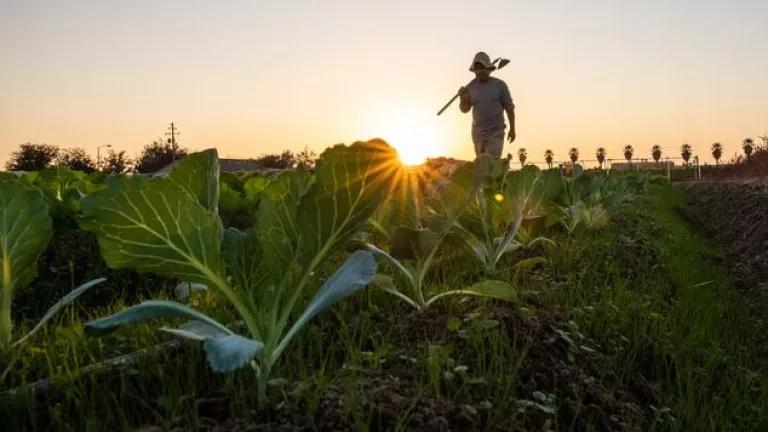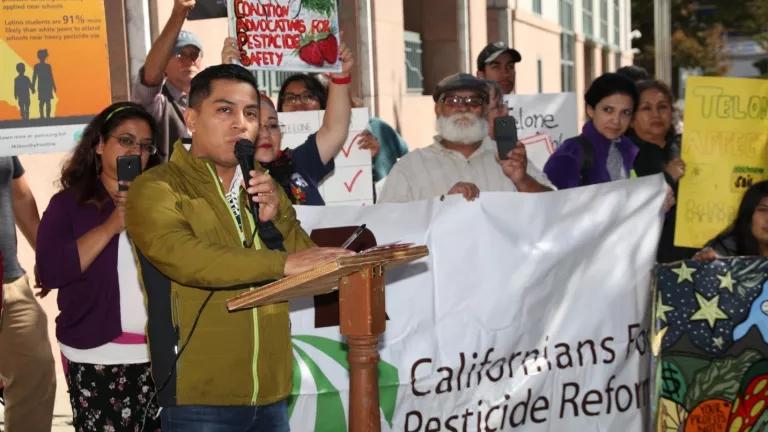CA Farm-to-School Survives a Challenging Budget Year
This is an important moment for California to lead in reshaping our food system toward one that is regenerative, healthy and just.

California’s newly approved 2020-2021 budget bears almost no resemblance to its rosy origins back in January, as we continue to weather the public health and economic impacts of the COVID-19 pandemic. However, there is one bright spot in the otherwise mixed outlook: the Legislature approved Governor Newsom’s proposal to create a $10 million California Farm-to-School program, which includes about $8.5 million in school grants as well as $1.5 million for sustained staffing at the California Department of Food and Agriculture (CDFA) Office of Farm to Fork to implement the program in the long run. These funds have the potential to improve the health and well-being of California’s most vulnerable children, create much-needed stable markets for California’s small- and mid-sized farmers and help our state achieve its “California for All” vision.
NRDC and our allies at The Edible Schoolyard Project, Community Alliance with Family Farmers, Californians for Pesticide Reform, Conscious Kitchen, Friends of the Earth, the Center for Ecoliteracy and many other organizations have been calling for additional state investment in school meal programs for over a year. Earlier in the spring, nearly eighty supporters, including farmers, school leaders, public health, and environmental advocates from San Diego to Del Norte County, called on California’s leaders to support Farm-to-School and set a course for change.
This $10 million allocation is needed now, more than ever, as our state continues to grapple with the COVID-19 pandemic. Schools have emerged as critical community feeding hubs, preparing meals for millions of food insecure children who are predominantly low-income students of color. Schools are also one of the few institutional food buyers operating right now. They can serve as a critical market for California’s farmers, whose livelihoods are threatened by massive losses as restaurants, food service and other supply channels remain restricted.
Farm-to-School sourcing can provide California schoolkids increased access to nutritious, high-quality food so they are ready to learn and thrive. Farm-to School programs also provide a pivotal connection between those who grow our food and young eaters. We urge the CDFA to maximize the health, equity and environmental benefits of this program by explicitly encouraging schools to buy from California’s organic farmers, who produce healthy food without toxic pesticides and use climate-friendly practices that lower greenhouse gas emissions and boost resiliency. After all, too many low-income Black and Latinx communities across the state are burdened disproportionately by toxic pesticide use and often bear the brunt of climate change-related impacts. We hope that this program will develop strategies that make it easier for schools to serve organic food to students, one important way to ensure that these healthy foods are not reserved just for those who can pay more.
Local and regional food production—including areas where organic farming is highly concentrated—can provide critical economic stability in California’s rural communities, which are disproportionately home to low-income Latinx communities that are the backbone of our state’s agricultural industry. It can also deliver significant fiscal benefits to small- and mid-scale producers who are underserved by traditional agricultural programs. California’s farmers and ranchers lead the country in overall food production, accounting for nearly 15 percent of overall agricultural value in the United States, according to 2018 data. Yet many farmers of color and farmworkers struggle to benefit from this bounty. California’s Farm-to-School program should be structured in ways that ensure socially disadvantaged farmers have the resources and technical assistance they need to effectively access school supply chains.
The COVID-19 pandemic has highlighted the fragility of our centralized, highly concentrated food system. In terms of recovery and stimulus, investing in vibrant regional food supply chains will be essential to our state’s food security and prosperity. Whether the challenge we face is a public health pandemic, wildfires, drought or other climate-related impacts, this modest initial investment in strong local and regional food supply chains throughout California will boost resiliency in the long-term.
The Legislature’s commitment to ensuring that our precious public resources go as far as possible to support health, food security, farmer economic stability and community resiliency is impressive. This is an important moment for California to lead in reshaping our food system toward one that is regenerative, healthy and just.




